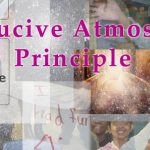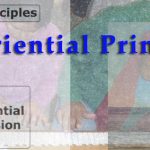Synthesis of Arts Principle
Synthesis of Arts Principle
The synthesis of arts principle involves integration of experiences in related subject areas leading to personalized connections and relations between those subject areas and associated experiences, concepts, senses, skills, and knowledge schemas (Sweller et al. 1998). Students develop different skills depending on which subject area they study. However, when combined in close proximity or simultaneously, related developments can become inter-connected, associated with each other as a joined memory, and synthesized within a student through integrated experiences.
The synthesis of arts principle reinforces the human ability to associate, see beyond a single discipline, and develop perspectives that are well integrated and creatively expressive. Synthesis of arts in IAM pedagogy involves teaching various arts in close proximity or simultaneously, with the aim of developing shared meaning or associative memories of those arts in students. This allows integration by associating broad schemas of learning. The synthesis of arts principle can accelerate learning of the involved arts (or subject areas). Because learning is multi-sensory, experiencing new knowledge through various modes and senses will strengthen and enhance the encoding (Goswami 2008), and provide more meaning-related associations (or inter-connections) during the shared experience. Thus, if the areas of art are experienced or encoded in a joined educational setting, they become a connected knowledge network (or schema, Sweller et al. 1998). If the initial encoding did create a united experience that involved multiple arts, then the subsequent recall of one of the arts will involuntarily activate the memories or subconscious experience of the other connected arts (Goswami 2008), such as remembering a dance by hearing its music, thus improving mental and subconscious recall (more on this in Soyfer 2016, Chapter 2, sections Theory and Science of Education pp. 44-60, and Social Emotional Learning and Mindfulness pp. 75-80).
Please click here to read more.
Bibliography:
Goswami, Usha. 2008. “Principles of Learning, Implications for Teaching: A Cognitive Neuroscience Perspective.” In Journal of Philosophy of Education, vol. 42, nos. 3-4, pp. 381–399. http://onlinelibrary.wiley.com/doi/10.1111/j.1467-9752.2008.00639.x/pdf (accessed February 1, 2015).
Soyfer, Nina. 2016. “Integrated Arts Pedagogy and Philosophy.” Canada: York University. http://yorkspace.library.yorku.ca/xmlui/handle/10315/32252 (accessed January 12, 2017).
Sweller, John, Jeroen J. G. van Merrienboer, and Fred G. W. C. Paas. 1998. “Cognitive Architecture and Instructional Design.” In Educational Psychology Review, vol. 10. No. 3, pp. 251-296.
Please note the text above is a direct quote form Dr. Nina Soyfer’s dissertation “Integrated Arts Pedagogy and Philosophy” defended and archived in 2016. All rights are reserved and this quotation is provided here with permission for educational purposes.
Soyfer, Nina. 2016. “Integrated Arts Pedagogy and Philosophy.” Canada: York University, pp. 2, 10-11. http://yorkspace.library.yorku.ca/xmlui/handle/10315/32252 (accessed January 12, 2017).
 Previous Post
Previous Post Next Post
Next Post